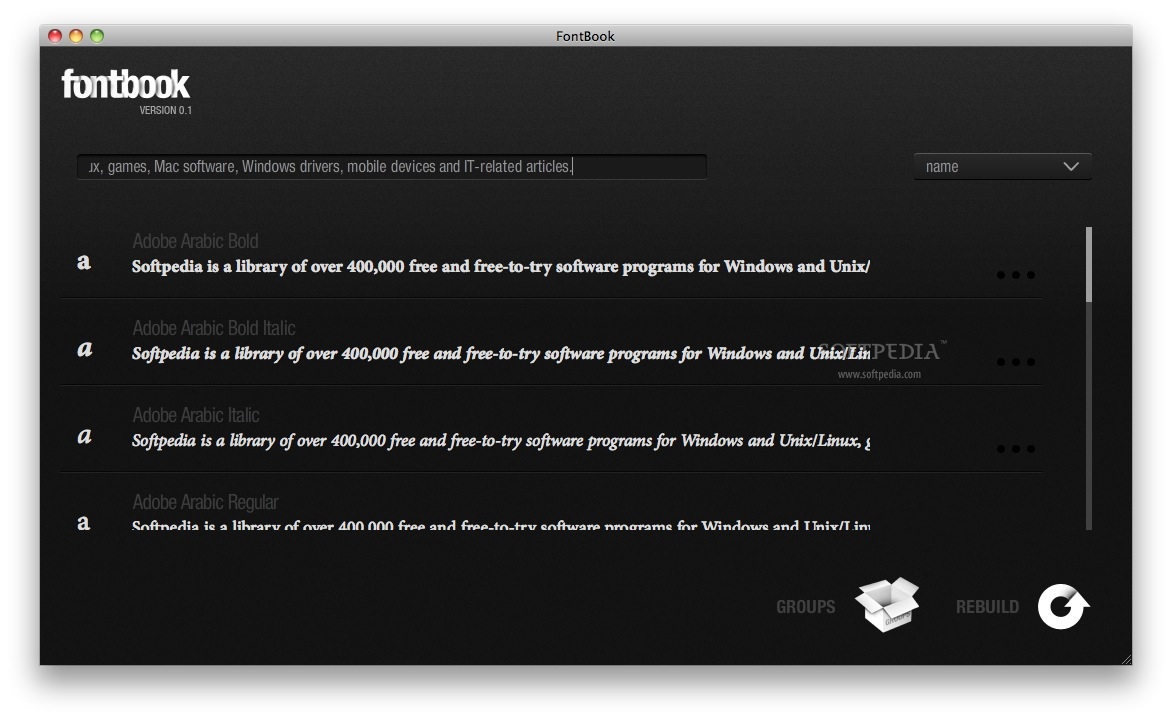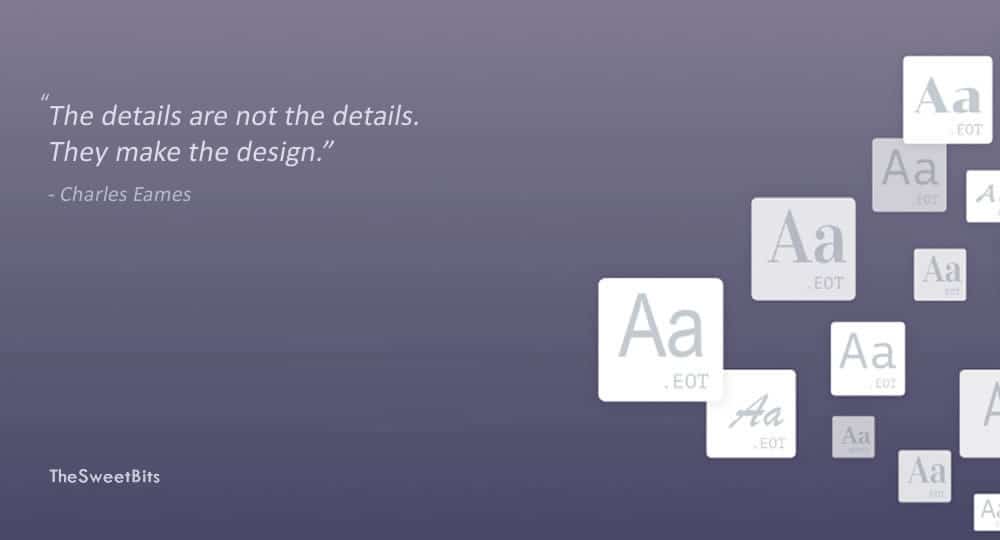ATTENTION macOS Big Sur users: Unfortunately, this article will no longer be of any help to you in paring down your system fonts. With their latest macOS release, Apple has completely removed the ability to delete system fonts. For more information, please click here.
Note: This article has been updated to include new instructions for macOS Catalina users.
Oct 31, 2020 Free download Suitcase Fusion 4 Suitcase Fusion 4 for Mac OS X. Suitcase Fusion 4 is the creative professional's font manager: - Complete control over your fonts - desktop and the Web - Powerful preview technologies - WebINK enabled for Web fonts. Download Suitcase Fusion 9 for Mac to manage fonts for all of your design projects from one convenient location.
Upgrading to the latest Mac operating system certainly has its perks, but one drawback as a professional graphic designer is opening up my favorite Adobe app only to discover an out-of-control font list. What may have once been a carefully curated short list of go-to fonts has now ballooned to monolithic proportions with hundreds of unwanted fonts you would never dare to use even on a bad design day. This can be a real headache, scrolling for days to locate a favorite font that used to be within sight.
If, like me, with every new upgrade you mourn the loss of your curated list, chances are you already have some experience with managing fonts to optimize your workflow. However, with each new macOS upgrade comes the addition of several new fonts that may or may not be system-critical. Case in point was the unveiling of Apple's new system font San Francisco with the release of El Capitan, so it's never been more important to have a trustworthy guide to definitively determine which fonts should stay and which can be safely deactivated or disposed of.
Over the years, I've consistently turned to Kurt Lang's extremely thorough and always up-to-date font management guide for macOS and OS X (Catalina [10.15] all the way back to Panther [10.3]). A thorough scan through his detailed instructions and I was able to restore my font lists to their proper, usable lengths without causing a system crash.
However, with Apple’s latest macOS release, Catalina, there’s now a new wrench thrown in the gears when it comes to deleting system font files. More on that in just a moment…
A couple of quick hints as you get started:

If you've never managed your fonts before (i.e. you just copy all your fonts into your user fonts folder), get a good font manager and use it. I've been an Extensis Suitcase Fusion user for years, but after some major interface design flaws in the last couple of releases (which I reviewed here), I’ve now switched to managing my fonts with Font Explorer X Pro. Whether you use one of these two, Font Book, or another option, just find what works best for you and use it consistently.
It's helpful to know that there are a few main places fonts live on your Mac (the first two contain a mix of system critical fonts and ones that can be safely disposed of, while the last two can be emptied with no adverse effects): (In Catalina, only the first one listed below contains system-critical fonts. Apple has now removed all system fonts from the Macintosh HD > Library > Fonts folder.)
Macintosh HD > System > Library > Fonts
Macintosh HD > Library > Fonts
Macintosh HD > Users > [username] > Library > Fonts
Macintosh HD > Users > [username] > Library > Application Support > Adobe > Fonts
And there are three main players that put fonts in those locations automatically:
Apple
Adobe
Microsoft
IMPORTANT: Before you delete any font files…
If you’re on macOS Mojave (10.14) or earlier, you'll need to temporarily disable a built-in security feature called System Integrity Protection that protects system critical files (like system fonts, for example) from being moved, modified, or deleted by malware. Once you've moved the unnecessary font files from the system folders, be sure to reenable SIP again!
Unfortunately, Apple has made it even harder to delete things from the System folder in macOS Catalina (10.15), and disabling SIP no longer works. The entire System file structure is now on a read-only partition. In Kurt’s guide, he recommends installing Catalina on another drive or partition, but I found that to be more hassle than it’s worth. Instead, I came across this multi-step solution that avoids having to run the OS off of a separate drive and instead makes the read-only partition writable again (that is, until you’re done, then you need to set it to read-only again):
Restart in recovery mode (Command + R) and disable SIP (yes, you still need to do this step to make the following changes)
Do a normal restart and follow the steps in this article to enable the root user on your machine
Log out, then log back in as the root user
Open Terminal and type in “sudo mount -uw /” (no quotes) to enable write access on the system drive until next restart
Delete the unneccesary/unwanted fonts per the instructions below and Kurt’s minimum font list
Log out of root user and back in with your own username
Disable root user
Restart in recovery mode and enable SIP, then restart as normal
I would recommend making an identical copy of each system font folder (the one(s) listed above) and place them where you can easily get to them later (either on your Desktop or in a 'Moved Fonts' folder you create in Documents). For example, I labeled my duplicate folder 'Catalina System Fonts'. If something would happen to go wrong, you should be able to copy whichever missing font is causing the issue back into its original folder.
Secondly, ensure you DO NOT delete the following system critical fonts, or your Mac may not boot or display OS menus properly (there are more that you'll need to keep onboard, but these are the absolute most critical):
Any San Francisco font (Apple's current de facto system font family)
Any Helvetica or Helvetica Neue font (Apple's system font in OS X Yosemite)
Lucida Grande (Apple's legacy system font in OS X Mavericks and previous)
LastResort.ttf (as the name implies, this is the font that will display when no other required fonts are available)
Follow Kurt's instructions closely on which fonts to keep and which to delete from the 'System > Library > Fonts' folder (and 'Library > Fonts' folder, if on Mojave or previous). However, you may want to keep a few more than he recommends. For instance, you may want to keep…
Any fonts you would see yourself using in your design work (e.g. Didot, Palatino, etc.), unless you already have an appropriate Postscript or OpenType replacement for them, which I recommend
Myriad Pro family, as this used to be a required font for Adobe Creative Suite (CS) applications and may still be regarded as the default for Creative Cloud (CC) apps
Fonts used by other applications like iWork and Microsoft Office (see sections in the font management guide detailing each of these)
Once you've cleaned up your font folders according to the minimum specifications and to your liking, you should notice a vastly improved workflow when searching for fonts in your design programs, less font conflicts, and possibly a faster machine all around.
Did you find this to be helpful? What are some of your font management best practices? Let me know in the comments section below.
The most important task of any font-management utility is to give you control over which fonts are available at any time. Otherwise, the system must enumerate extraneous font data at start-up and when opening and closing applications or documents, and you waste time struggling with long, unwieldy font menus. For anyone with more than a few dozen fonts, a font manager is essential. Having been acquired by Extensis, the once favored Suitcase is again an option for Mac users. Extensis Suitcase 8 works reliably, without the freezes and crashes that plagued its predecessors, but it still falls short of the competition–particularly where its new features are concerned.
When Suitcase was owned by Symantec, it failed to remain compatible with Mac OS updates. Frustrated users turned to longtime competitor Alsoft MasterJuggler and to the newer, more complex Adobe ATM Deluxe and DiamondSoft Font Reserve. Now, both Font Reserve 2.0.2 and ATM Deluxe 4.5 autoactivate fonts for multiple applications, check font integrity, and automatically create folders of fonts for transmission with jobs to output services–features lacking in Suitcase 8.

Extensis did update Suitcase to work on any Power Mac running Mac OS 7.5.5 through 8.6. And Suitcase now lets users open font suitcases temporarily without creating a set, a time-saver for output services and people who need to open fonts briefly.
Suitcase 8 acquired its other new functions by incorporating third-party utilities. The Suitcase 8 XTension (formerly Font Fetch, from NRG Software) autoactivates fonts for QuarkXPress 3.2X and 4.0, including those in imported EPS files–a very nice feature. But the XTension works only for fonts that are already in a Suitcase 8 set, and it had trouble recognizing some fonts in our tests, even though it had autoactivated the suitcase containing the fonts. In addition, autoactivation doesn’t work with other illustration and layout applications, including Macromedia FreeHand and Adobe Illustrator and PageMaker.
Suitcase 8 also ships with a special version of Insider Software’s FontAgent, a stand-alone utility that resolves duplicate fonts and missing screen or printer fonts and sets up a logically organized font library. But FontAgent seems to decide which duplicates to retain somewhat randomly–in several cases, it kept an older version. It also empties the system’s Fonts folder, replacing only Mac System fonts.

Suitcase Fusion Free
Macworld’s Buying AdviceSuitcase Font Manager Mac Free Online
For users who prefer the straightforward Suitcase interface and the way it handles sets and font suitcases, Suitcase 8 is a good choice, even with its flawed third-party additions. And if you find ATM Deluxe or Font Reserve dauntingly complex, give Suitcase a look. It’s still not perfect, but it has promise.
RATING:PROS: Familiar interface; easy to use; stable. CONS: Flawed autoactivation feature; FontAgent is overzealous. COMPANY: Extensis (800/796-9798, http://www.extensis.com ). COMPANY’S ESTIMATED PRICE: $90.
August 1999 page: 52